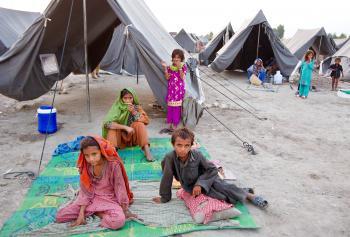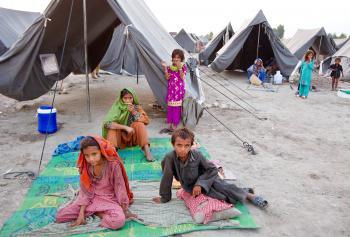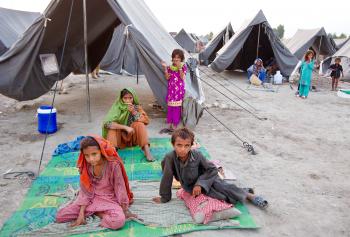UN Humanitarian Operations to Go Green
A new online disaster relief portal was announced on Thursday to help UN relief operations go green.

Pakistan flood victims sit at a basic tent camp August 19, 2010 in Sukkur, Pakistan. The country's agricultural heartland has been devastated, with rice, corn and wheat crops destroyed by floods. Officials say as many as 20 million people have been effected during Pakistan's worst flooding in 80 years. The army and aid organizations are struggling to cope with the scope of the wide spread scale of the disaster that has killed over 1,600 people and displaced millions. The UN has described the disaster as unprecedented, with over a third of the country under water. Paula Bronstein/Getty Images
|Updated:


